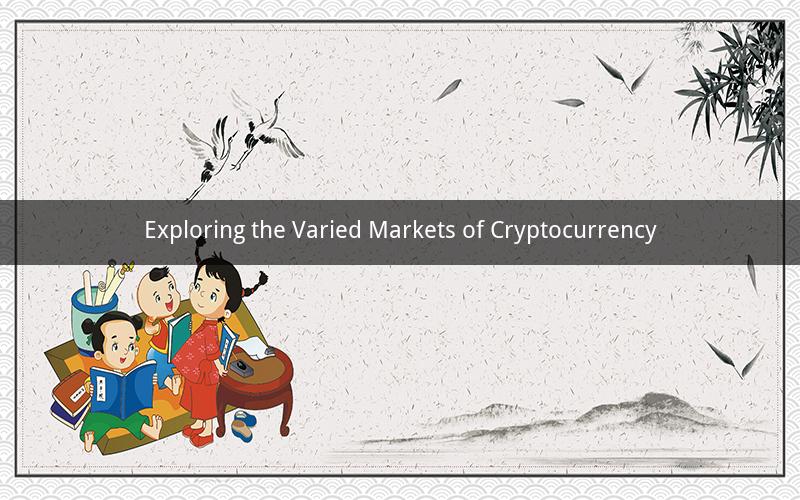
The cryptocurrency landscape is a vast and dynamic ecosystem, with numerous markets offering diverse opportunities and challenges. From the largest and most popular cryptocurrencies to niche altcoins and decentralized finance (DeFi) platforms, understanding the different markets within the cryptocurrency realm is crucial for investors and enthusiasts alike. This article delves into the various markets that exist within the cryptocurrency world, providing insights into their unique characteristics and potential impact on the broader market.
1. Bitcoin Market
The Bitcoin market remains the most significant and influential segment within the cryptocurrency industry. Launched in 2009, Bitcoin is often referred to as "digital gold" due to its decentralized and finite supply. This market is characterized by high liquidity, significant trading volume, and a strong network effect. Bitcoin's market cap often sets the tone for the broader cryptocurrency market, with its price movements having a ripple effect on other cryptocurrencies.
2. Altcoin Market
The altcoin market encompasses a vast array of alternative cryptocurrencies that aim to improve upon Bitcoin's features or offer unique value propositions. Altcoins range from privacy coins, such as Monero and Zcash, to scalability-focused projects like Ethereum and Cardano. This market is highly speculative and subject to rapid price fluctuations. Investors in the altcoin market often seek out projects with innovative technologies or potential for growth.
3. DeFi Market
Decentralized finance (DeFi) has emerged as a significant market within the cryptocurrency space, offering users decentralized alternatives to traditional financial services. DeFi platforms enable users to engage in activities such as lending, borrowing, and trading without intermediaries. The DeFi market is characterized by its rapidly evolving nature, with numerous projects competing to offer the most innovative solutions. This market has seen a surge in popularity, driven by the increasing interest in blockchain-based financial products.
4. NFT Market
Non-fungible tokens (NFTs) have gained immense popularity in recent years, representing a unique market within the cryptocurrency space. NFTs are digital assets that are distinct and cannot be replicated or substituted. They are often used to represent ownership of digital art, music, collectibles, and other unique items. The NFT market has seen a surge in interest from artists, collectors, and investors, with some NFTs fetching record-breaking prices.
5. Stablecoin Market
Stablecoins are cryptocurrencies designed to maintain a stable value by pegging to a fiat currency, commodity, or a basket of assets. The stablecoin market aims to provide a more stable and reliable alternative to volatile cryptocurrencies like Bitcoin. This market is characterized by its low volatility and high liquidity, making stablecoins a popular choice for investors looking to mitigate risk. Tether, USD Coin, and Binance USD are some of the most popular stablecoins in the market.
6. Security Token Market
Security tokens represent a unique market within the cryptocurrency space, offering a regulatory-compliant alternative to traditional securities. Security tokens are digital representations of ownership in a company, asset, or investment vehicle. This market is still in its early stages, but it has the potential to revolutionize the way investments are made and managed. Security tokens offer increased transparency, efficiency, and accessibility to investors.
7. Cross-Chain Market
The cross-chain market focuses on the interoperability between different blockchain networks. This market aims to enable seamless transfer of assets, data, and value across various blockchains. Cross-chain projects like Polkadot, Cosmos, and Ethereum 2.0 seek to overcome the limitations of current blockchain networks, such as scalability and interoperability issues. The cross-chain market is poised to play a crucial role in the future of blockchain technology.
1. What are the key differences between the Bitcoin market and the altcoin market?
The Bitcoin market is characterized by its high liquidity, significant trading volume, and strong network effect, making it the most influential cryptocurrency. Altcoins, on the other hand, often aim to improve upon Bitcoin's features or offer unique value propositions, making them highly speculative and subject to rapid price fluctuations.
2. How do DeFi platforms differ from traditional financial services?
DeFi platforms offer decentralized alternatives to traditional financial services, such as lending, borrowing, and trading, without intermediaries. This enables users to engage in these activities with increased transparency, efficiency, and accessibility.
3. What are some popular NFT projects and how do they differ from other digital assets?
Popular NFT projects include digital art collections, music, and collectibles. These projects differ from other digital assets by representing ownership of unique, non-replicable items, often with a strong community and cultural significance.
4. Why are stablecoins gaining popularity in the cryptocurrency market?
Stablecoins are gaining popularity due to their low volatility and high liquidity, making them a popular choice for investors looking to mitigate risk and facilitate cross-border transactions.
5. How does the cross-chain market address the limitations of current blockchain networks?
The cross-chain market addresses the limitations of current blockchain networks by enabling seamless transfer of assets, data, and value across various networks. This enhances scalability, interoperability, and overall efficiency of blockchain-based applications.